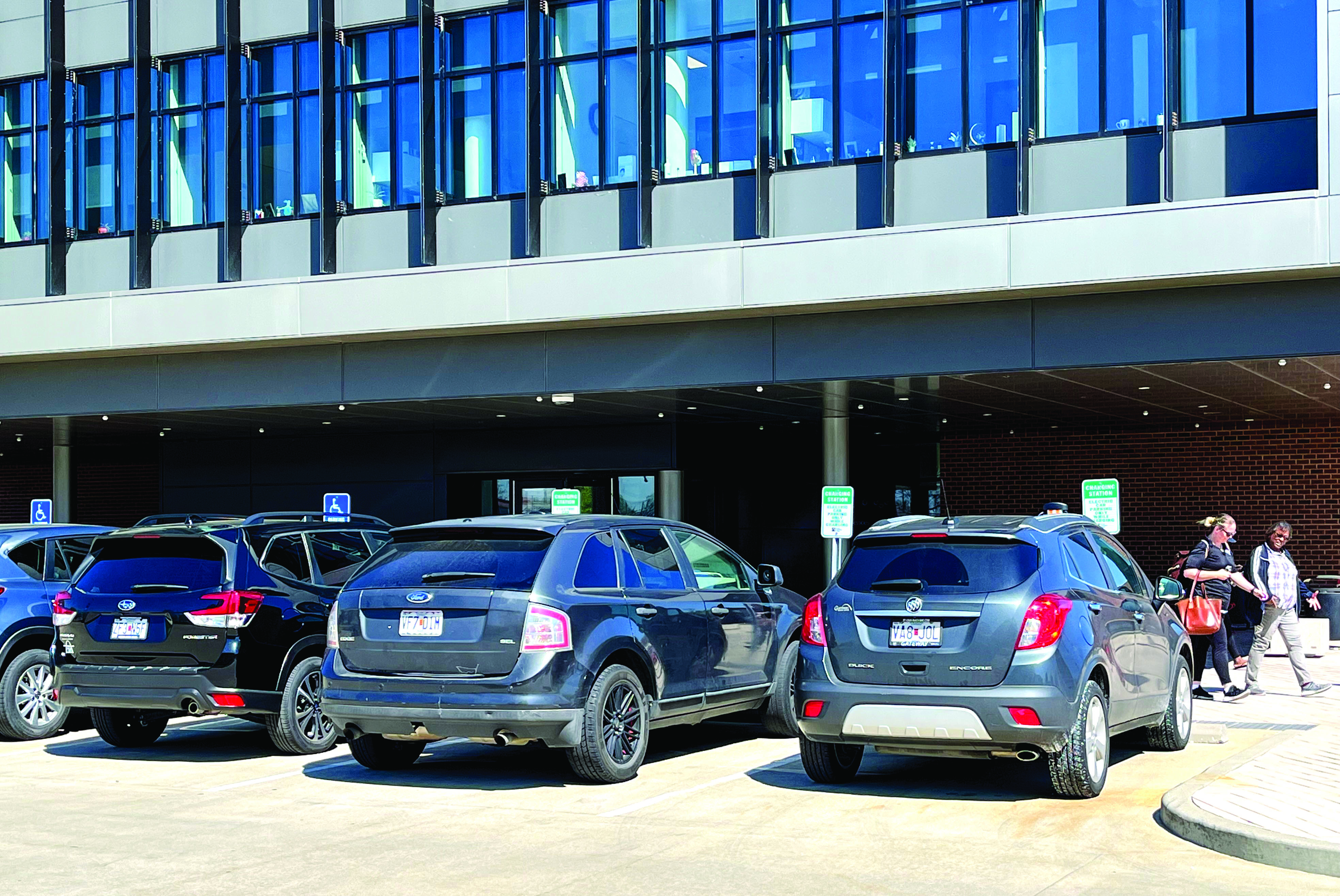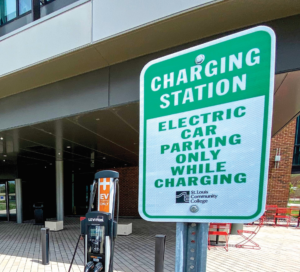
By Theodore Geigle
The Scene staff
St. Louis Community College spent thousands of dollars installing four electric-vehicle-charging stations on the Forest Park campus in 2019.
But the stations have been underutilized due to network-connectivity issues and drivers with gas-powered vehicles parking in spots designated for electric vehicles.
Ethan Curtis, who owns a 2022 Chevrolet Bolt, has frequently reported problems with the Forest Park stations on PlugShare, an informational website and app for drivers of electric vehicles.
“Zero enforcement of EV only parking or even handicap parking,” Curtis wrote earlier this month. “None of the vehicles parked in the handicap parking had handicap placards. Two of the three spots for EV charging were not EVs.”
Lt. David Berryman, STLCC police commander for the Forest Park campus, declined to comment, saying he didn’t have authority to speak on the subject.
Berryman referred questions to his supervisor, Capt. Benjamin Talley, who didn’t return multiple phone calls. Talley’s supervisor, A.J. Adkins, director of STLCC police, didn’t return multiple phone calls and didn’t respond to emailed requests for an interview.
Curtis isn’t a student at Forest Park, but his girlfriend lives in the area, so it’s convenient for him to charge his Bolt on campus while visiting her.
“I think that the charging stations are important not just for students, but for the community because apartment buildings don’t have charging stations, and if places like Forest Park didn’t have them, that would leave a lot of people behind, people who don’t have the time or the money to go out of their way to the stations,” he said in an interview.
STLCC built a new Center for Nursing and Health Sciences on the Forest Park campus in 2019.

![]()
![]() The college installed three electric-vehicle-charging stations directly west of the center and one to the south along College Drive. They’re operated by the company ChargePoint. Each is designed to deliver 6.6 kilowatts of electricity per hour.
The college installed three electric-vehicle-charging stations directly west of the center and one to the south along College Drive. They’re operated by the company ChargePoint. Each is designed to deliver 6.6 kilowatts of electricity per hour.
The stations were installed to help the center get LEED (Leadership in Energy and Environmental Design) certification, according to Jason Young, coordinator of marketing and communications at Forest Park.
Bob Smith, executive director of STLCC facilities, estimated that the college spent $24,000 to install them.
“I have only been around for 12 months, so I wasn’t here when they were installed,” he said. “I know that they worked unreliably until recently, when we fixed them in the last few months. I haven’t gotten reports since then that they don’t work.”
Throughout 2021 and 2022, multiple drivers reported on Plug Share that one or more of the electric-vehicle-charging stations Forest Park were out of order.
Police have issued tickets to drivers of gas-powered vehicles parking in spots reserved for electric vehicles, but it’s not known how often that happens or whether violators pay the fines.
Berryman declined to give the cost of fines when tickets are issued to drivers who park in either handicapped or electric-vehicle spots on campus.
Joshua Walker, associate professor of automotive technology, has noticed an increase in the number of students, faculty and staff members driving electric vehicles in recent years.
“There used to be one or two around campus, but lately I’ve seen around 10 to 20,” he said this month. “We’ve worked on two of them, a Toyota Prius and a Chevrolet Volt. … We mostly worked on their brakes and changed a battery though. We didn’t do any electrical work on them.”
STLCC officials apparently are aware of problems with drivers of gas-powered vehicles parking in spots designated for electric vehicles. Notices have appeared in several issues of the online employee newsletter.
“Remember you must either have a handicapper license plate or a hangtag to park in a designated accessible parking spot on campus,” the notices state. “To park in an electric vehicle spot you must have an electric vehicle.
“Those who do not either have the correct plate or tag for handicapped parking or who improperly park in an EV charging spot risk receiving a ticket and having their vehicle towed.”
Curtis feels that the reason so many drivers of gas-powered vehicles park in electric-vehicle spots at Forest Park is that the latter are close to major entrances.
“If I was able to design where they would be put, I wouldn’t put them right in front of the (Center for Nursing and Health Sciences) because then you’re always going to have to fight for that space,” he said.
